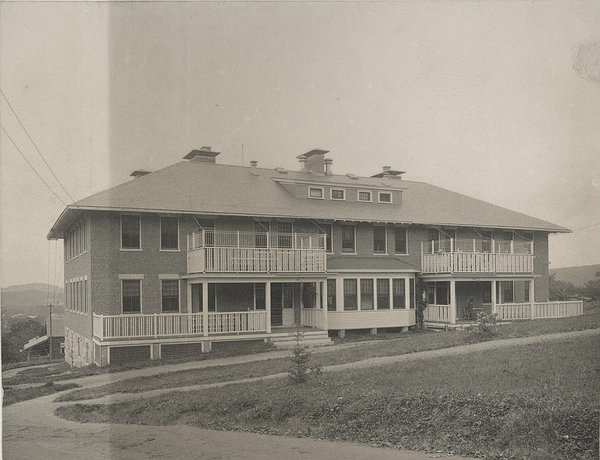Difference between revisions of "Portal:Featured Image Of The Week"
From Asylum Projects
M-Explorer (talk | contribs) |
M-Explorer (talk | contribs) |
||
| Line 1: | Line 1: | ||
{{FIformat | {{FIformat | ||
| − | |Image= | + | |Image= palmerinfirm.png |
|Width= 600px | |Width= 600px | ||
| − | |Body= | + | |Body= Beginning in 1895, the institution's physical plant was reconstructed as part of its conversion into the [[Monson Developmental Center|Massachusetts State Hospital for Epileptics]]. The old almshouse, essentially a frame reconstruction of the 1848 reformatory in Westborough, was torn down and replaced by a series of brick cottages intended to treat epilepsy. From the outset, most patients at the hospital also suffered from related intellectual disabilities and mental illness. This prompted a gradual shift in focus over the century. By the late '60s, Monson Developmental Center, as the facility came to be known, exclusively provided services to the intellectually disabled who were also suffering related health and mobility issues. |
}} | }} | ||
Revision as of 04:27, 17 March 2024
Featured Image Of The Week
Beginning in 1895, the institution's physical plant was reconstructed as part of its conversion into the Massachusetts State Hospital for Epileptics. The old almshouse, essentially a frame reconstruction of the 1848 reformatory in Westborough, was torn down and replaced by a series of brick cottages intended to treat epilepsy. From the outset, most patients at the hospital also suffered from related intellectual disabilities and mental illness. This prompted a gradual shift in focus over the century. By the late '60s, Monson Developmental Center, as the facility came to be known, exclusively provided services to the intellectually disabled who were also suffering related health and mobility issues.
